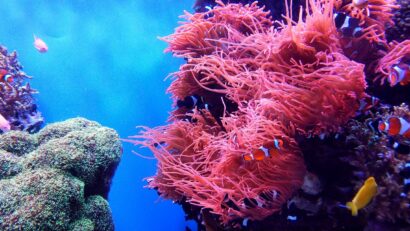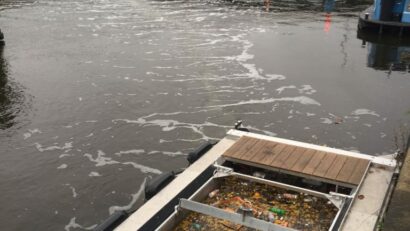
Startup uses 3D prints to build “Urban Reefs” for better Air Quality
The Dutch startup “Urban Reef” uses 3D printers with renewable materials to create sculptures that are planted with a variety of mosses, mushrooms, and other plants. These help clean the polluted air of big cities with their natural processes like photosynthesis. As of now the project is still in development but already shows promise as sustainable solutions for improving air quality are hard to come by.
Amsterdam – Bio inclusivity is the word of the day. Cities have, ecologically speaking, come closer to deserts than any other biome they might have been built upon. Parking spaces, multilane highway systems and other concrete infrastructure have driven a large chunk of wildlife as far away from the city as possible. Despite the efforts of numerous city councils across the world, this model of car dependent cities and fossil fuelled economies has led to poor air quality reaching health endangering levels.
Combating dangerous air pollution with “Urban Reefs” made of sustainable sculptures and plants
This is where urban reefs come in: the young studio based in the Netherlands has started up a variety of projects, promising improvements when it comes to air quality and biodiversity in cities. Similar to what reefs are for shallow ocean biomes, these urban reefs, are supposed to be an oasis for different species of plants and fungi. Sprinkling these reefs across cities would be a cheap and space efficient way of making cities more liveable.
[embedded content]
“Urban reefs” is using 3D printers filled with biodegradable, “living” material, allowing plants to easily grow on the surface. The method allows for cheap and sustainable ways to produce all kinds of things. In their case, shell-like sculptures to house the plants. At this point, their team is focused on a variety of improvements, like improving the materials used and the shell designs, as well as bio receptivity research, looking at what conditions are favourable for growing communities of organisms in an urban environment.
The step away from concrete is important considering that the sand used for concrete is getting rather scarce due to a boom in the construction industry around the globe. Concrete needs sand as a main ingredient, but not every kind of sand is usable, dessert and ocean sand is too smooth to be used for industrial purposes.
Air pollution responsible for growing cancer rates in cities
When it comes to air pollution, it is important to distinguish between particular matter (pm) and coarse dust. Particular matter are particles up to 2.5 micrometres, coarse dust has a size up to 10 micrometres. The danger of air pollution lies with the particular matter, emitted by cars, tires, coal power plants and other methods of heating. According to the World Health Organization (WHO), being subject to large amounts of air pollution, especially pm, over time can lead to “increased risk of respiratory infections, heart disease and lung cancer”.
But what causes air pollution? The obvious culprit is cars, not just in burning fuel, but also in not so obvious ways, like wearing down tires that emit small plastic particles into the air and further into our lungs. With results like this, it’s no wonder that projects to help filter these particles out of the air are in high demand. The plants, also subject to the same pollution, have better capabilities when it comes to filtering these harmful microscopic particles than humans. Läs mer…
